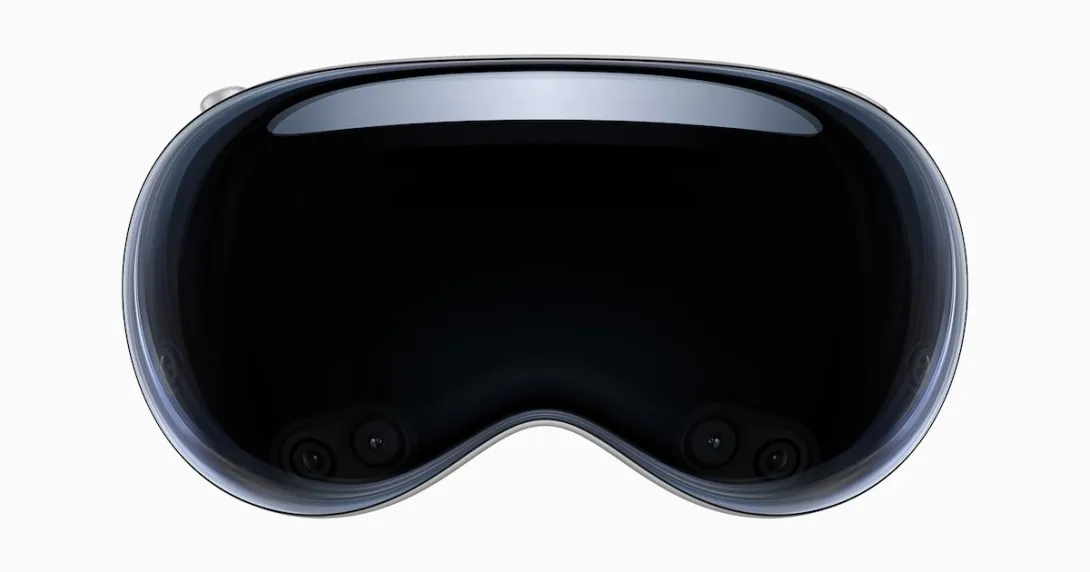
Photo courtesy of Apple
Cognixion, a developer of noninvasive brain-computer interface technology, has launched a clinical study that integrates its EEG-based brain-computer interface with Apple Vision Pro.
The study aims to evaluate Apple Vision Pro integrated with Cognixion's brain-sensing band and augmented reality software.
"The integrated device enables users to construct AI-assisted communication and computer control commands using a combination of attention, eye gaze and head pose," the company says.
Additionally, the company said that by merging Cognixion's proficiency in neurotechnology and AI with the accessibility features on the Apple Vision Pro, the study will evaluate new assistive pathways to permit faster, more natural communication and computer interaction for individuals with speech and mobility challenges.
The study also aims to analyze new versions of hands-free, voice-free interaction for people with limited or no voluntary motor control.
According to the company, people with amyotrophic lateral sclerosis (ALS), spinal cord injury, stroke-related speech impairments and traumatic brain injury are likely to benefit from the technology.
The company's Cognixion ONE Axon-R platform enables exact measurement and modulation of brain activity via visual stimuli, biofeedback and neurofeedback. The wearable device provides up to 16 channels of research-quality physiological data.
Meanwhile, researchers outfitted with the Axon-R can expand beyond the limits of standard laboratories, engaging in immersive and interactive studies that leverage multimodal interaction, augmented reality and brain sensing in multiple settings indoors and outdoors.
Patients can enroll in the study, which is expected to run through April 2026.
"By exploring how Cognixion's noninvasive BCI [brain-computer interface] technology and AI applications can work with Apple's accessibility features, we hope to unlock new levels of independence and connection for people living with ALS, spinal cord injuries, stroke and traumatic brain injuries," Andreas Forsland, CEO of Cognixion, said in a statement.
"Our focus is on improving lives today without requiring surgery or tethered systems."
THE LARGER TREND
In June, Cognixion and Pupil Labs entered into a partnership to develop an interface that measures visual attention and neural signals.
The aim was for Pupil Labs' eye-tracking software to integrate with Cognixion's Axon-R SDK interface, enabling data collection across platforms.
Pupil Labs and Cognixion's technologies provide a higher level of data confidence and a platform that can adapt to the needs of patients, particularly those with diseases, such as ALS, where progression may impact eye-gaze ability.
In May, Cognixion announced that Blackrock Neurotech would provide Cognixion's Axon-R wearable neural interface platform to research institutions via its distribution network. Blackrock Neurotech was to serve as an unrestricted distributor of Cognixion's Axon-R.
In 2024, Sharp HealthCare launched the Spatial Computing Center of Excellence within its Prebys Innovation and Education Center to focus its development efforts on using the Apple Vision Pro augmented reality headset to enhance patient care.
Sharp partnered with EHR vendor Epic and Dutch information analytics firm Elsevier on the project, which explored how spatial computing could amplify effectiveness and productivity within various specialties and clinical roles.
The center's multidisciplinary research team also evaluated the potential impact that spatial computing could have on collaboration, education and treatments. It explored its use across various healthcare settings, from the operating room to bedside care.
The same year, Cedars-Sinai launched Xaia, a spatial-computing, AI-enabled virtual psychotherapy companion accessible on the Apple Vision Pro headset that aimed to help people with anxiety, addiction, depression and pain management.
In 2023, Sam Glassenberg, founder and CEO of Level Ex, spoke with MobiHealthNews Executive Editor Jessica Hagen about how the Apple Vision Pro augmented reality headset could be used in medicine, including its potential impact on a surgeon's performance through eye-tracking technology.

